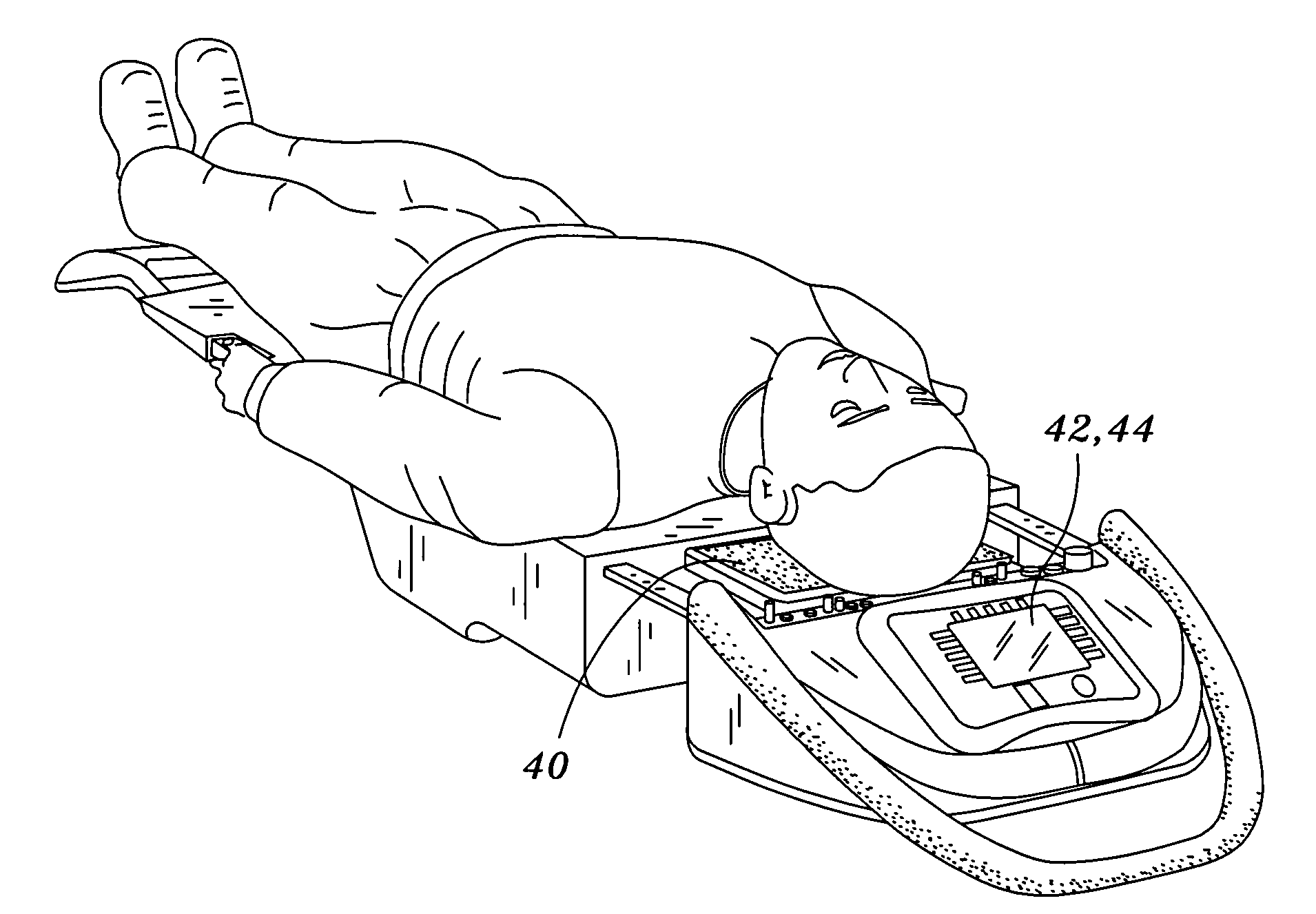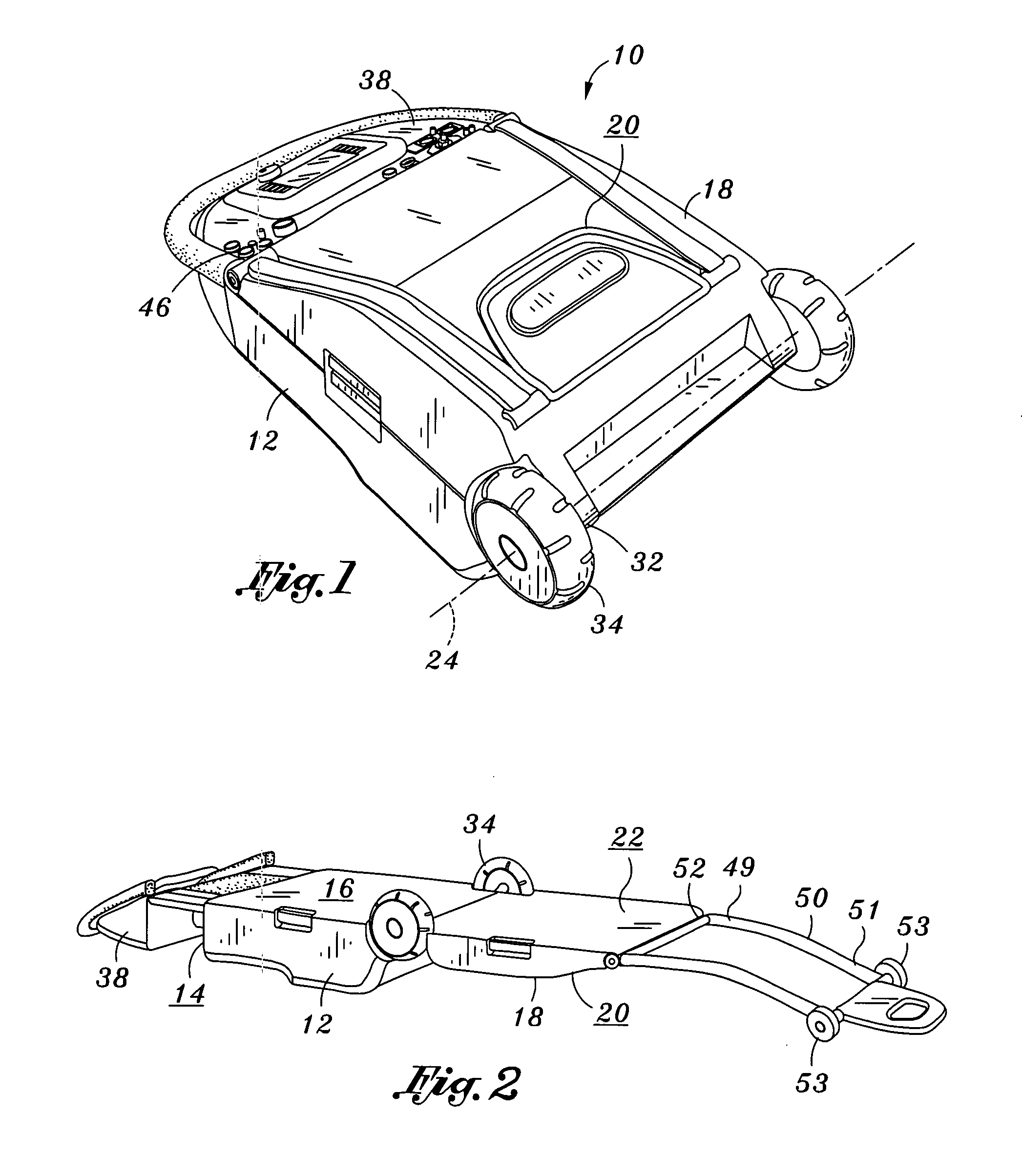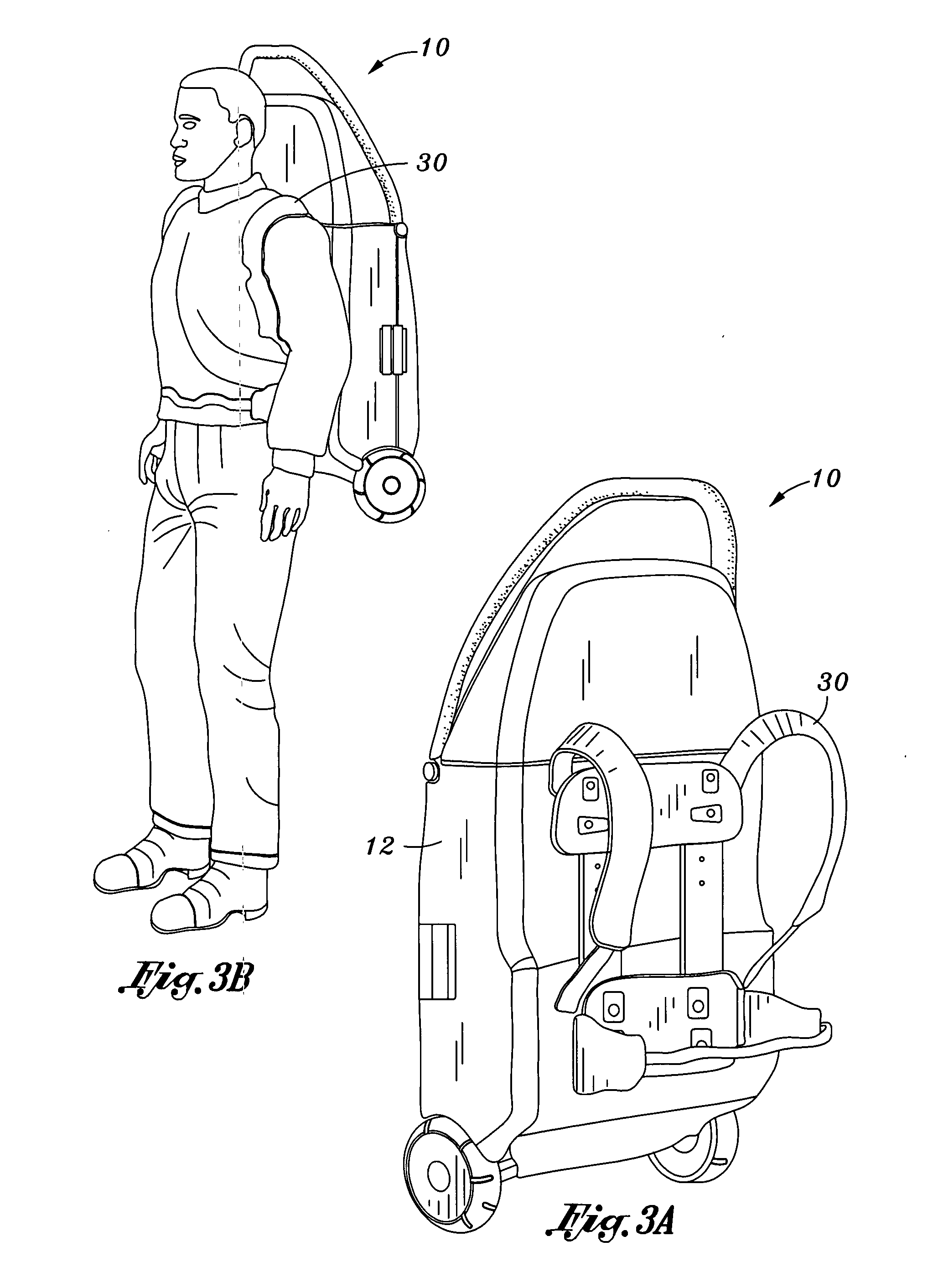Foldable, portable trauma treatment and monitoring patient platform
a patient platform and portable technology, applied in the field of portable emergency care devices, can solve the problems of shortening the treatment window, affecting the treatment effect, and the inability to meet the constraints, so as to facilitate the movement of the platform, and enhance the portability
- Summary
- Abstract
- Description
- Claims
- Application Information
AI Technical Summary
Benefits of technology
Problems solved by technology
Method used
Image
Examples
Embodiment Construction
[0031]The detailed description set forth below is intended as a description of the presently preferred embodiment of the invention, and is not intended to represent the only form in which the present invention may be constructed or utilized. The description sets forth the functions and sequences of steps for constructing and operating the invention. It is to be understood, however, that the same or equivalent functions and sequences may be accomplished by different embodiments and that they are also intended to be encompassed within the scope of the invention.
[0032]The present invention is a lightweight, compact system of integrated medical, data and / or communication systems packaged to facilitate and support basic commonly accepted technological trauma treatment and care for a critically injured patient. This package may be implemented as a durable housing containing an assortment of subsystem units representing a basic set of diagnostic, therapeutic and data management functionali...
PUM
 Login to View More
Login to View More Abstract
Description
Claims
Application Information
 Login to View More
Login to View More - R&D
- Intellectual Property
- Life Sciences
- Materials
- Tech Scout
- Unparalleled Data Quality
- Higher Quality Content
- 60% Fewer Hallucinations
Browse by: Latest US Patents, China's latest patents, Technical Efficacy Thesaurus, Application Domain, Technology Topic, Popular Technical Reports.
© 2025 PatSnap. All rights reserved.Legal|Privacy policy|Modern Slavery Act Transparency Statement|Sitemap|About US| Contact US: help@patsnap.com



